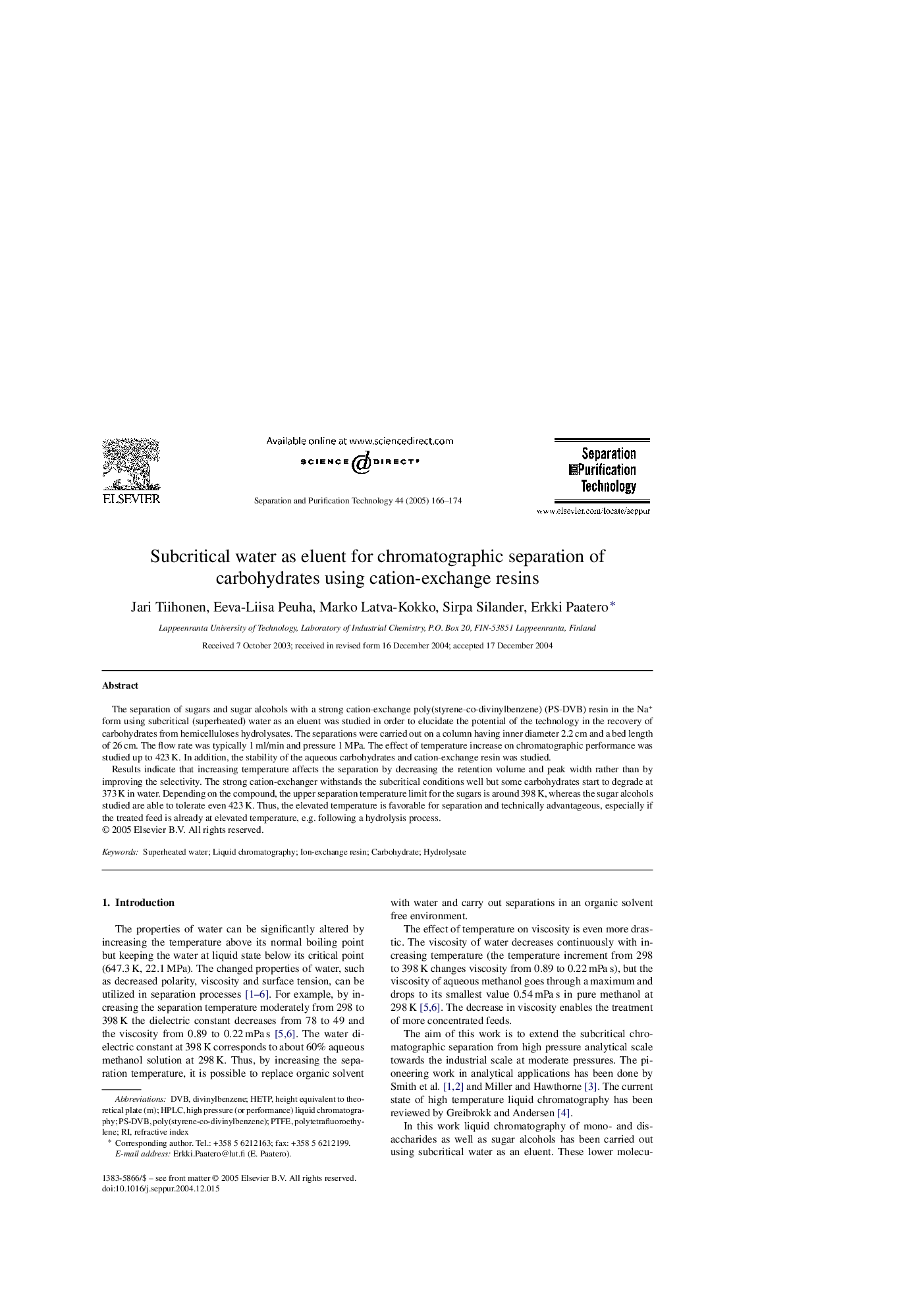| Article ID | Journal | Published Year | Pages | File Type |
|---|---|---|---|---|
| 10389861 | Separation and Purification Technology | 2005 | 9 Pages |
Abstract
Results indicate that increasing temperature affects the separation by decreasing the retention volume and peak width rather than by improving the selectivity. The strong cation-exchanger withstands the subcritical conditions well but some carbohydrates start to degrade at 373Â K in water. Depending on the compound, the upper separation temperature limit for the sugars is around 398Â K, whereas the sugar alcohols studied are able to tolerate even 423Â K. Thus, the elevated temperature is favorable for separation and technically advantageous, especially if the treated feed is already at elevated temperature, e.g. following a hydrolysis process.
Keywords
Related Topics
Physical Sciences and Engineering
Chemical Engineering
Filtration and Separation
Authors
Jari Tiihonen, Eeva-Liisa Peuha, Marko Latva-Kokko, Sirpa Silander, Erkki Paatero,
